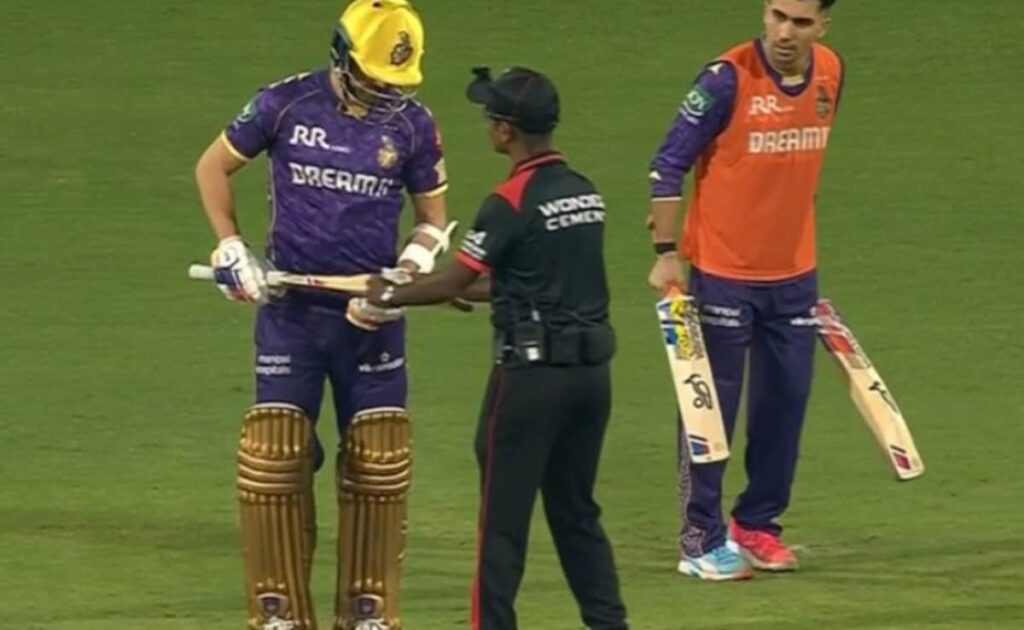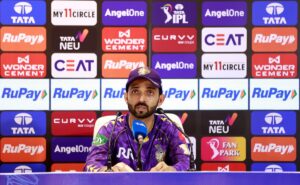
IPL Bat Gauge Checks: Daniel Vettori's Candid Assessment of Equipment Testing in IPL 2025
IPL Bat Gauge Checks: Daniel Vettori’s Candid Assessment of Equipment Testing in IPL 2025
Table of Contents
- Introduction: Vettori’s Take on IPL Bat Gauge Checks
- Vettori’s Humorous Dismissal of IPL Bat Gauge Checks
- IPL Bat Gauge Checks: Understanding the Current System
- Cricket Bat Evolution Necessitating IPL Bat Gauge Checks
- SRH’s Strategic Approach Beyond IPL Bat Gauge Checks
- How Opposition Analysis Affects Performance Despite IPL Bat Gauge Checks
- IPL Bat Gauge Checks in Historical Context
- Balancing Equipment Rules with Entertainment Value
Introduction: Vettori’s Take on IPL Bat Gauge Checks
Sunrisers Hyderabad head coach Daniel Vettori has provided a refreshingly candid assessment of the IPL Bat Gauge Checks implemented in the 2025 season. During a press conference at Mumbai’s Wankhede Stadium on Wednesday, the former New Zealand captain shared his perspective on these equipment testing procedures that have become a notable feature of this IPL season, suggesting they have minimal impact on the game while humorously adding that he wished similar regulations had existed during his own playing career.
Sunrisers Hyderabad head coach Daniel Vettori speaking about IPL Bat Gauge Checks during his press conference at Wankhede Stadium
The IPL Bat Gauge Checks have gained significant attention this season as umpires routinely verify equipment compliance before players take the field. Vettori’s comments offer a unique insight from someone who has experienced cricket’s technological evolution from both player and coach perspectives, making his assessment of these IPL Bat Gauge Checks particularly valuable for understanding their practical impact on the game.
Vettori’s Humorous Dismissal of IPL Bat Gauge Checks
When questioned about the impact of umpires conducting IPL Bat Gauge Checks, Vettori responded with his trademark dry wit: “I wish they’d checked the bats when I was playing.” This comment, delivered with a smile during SRH’s press conference at the Wankhede Stadium, highlighted the significant evolution of bat technology and dimensions since Vettori’s playing days when such equipment testing was not a regular feature of the game.
“I wish they’d checked the bats when I was playing. No, I don’t think it makes any difference. The guys get tested regularly. The umpires go through the dressing rooms a lot of the time, so (the) guys know that their bats are compliant, so it’s just a quick one second, and everyone moves on.”
Expanding on his initial quip about IPL Bat Gauge Checks, Vettori downplayed the significance of the inspections, explaining that players are well aware of the requirements and that the checks are largely a formality: “It’ll reset anyone trying to have a bigger bat, but it’s pretty easy to get your bat through that gauge.” This assertion suggests that most professional cricketers are already using equipment that falls within the permitted specifications, making the visual IPL Bat Gauge Checks more ceremonial than functionally necessary in actual competition.
Vettori’s humorous take on IPL Bat Gauge Checks reflects a broader pattern among former players who competed in eras with less powerful batting equipment. His comment simultaneously acknowledges the advantages modern batters enjoy while maintaining a pragmatic view that the current testing regime is unlikely to significantly alter the game’s competitive balance.
IPL Bat Gauge Checks: Understanding the Current System
The IPL 2025 season has introduced more rigorous equipment verification procedures, with on-field umpires using a standardized gauge through which players’ bats must pass to confirm they comply with size regulations. These IPL Bat Gauge Checks are designed to enforce consistency and eliminate any potential advantage from oversized bats that exceed the permitted dimensions across all teams and players.
The most recent high-profile incident involving IPL Bat Gauge Checks occurred just a day before Vettori’s comments, when Kolkata Knight Riders fast bowler Anrich Nortje was required to change his bat during Tuesday’s match against Punjab Kings after it failed to pass through the gauge. This follows earlier instances involving Andre Russell and Sunil Narine, creating a pattern of compliance issues predominantly affecting power hitters known for their boundary-clearing capabilities.
Official IPL Bat Gauge Checks Specifications
The standardized gauge used for IPL Bat Gauge Checks ensures bats meet the following dimensional requirements:
- Maximum width: 4.25 inches (108mm)
- Maximum depth: 2.64 inches (67mm)
- Maximum edge thickness: 1.56 inches (40mm)
Bats that cannot pass through the gauge during the IPL Bat Gauge Checks are deemed non-compliant, and players must immediately switch to equipment that meets the specifications before taking the field.
These specifications align with the Marylebone Cricket Club (MCC) regulations implemented globally in 2017, though the IPL Bat Gauge Checks represent a more visible and consistent enforcement mechanism. The public nature of these checks adds a ceremonial dimension to equipment regulation that wasn’t present in previous IPL seasons.
Cricket Bat Evolution Necessitating IPL Bat Gauge Checks
Vettori offered interesting insights into the technological evolution of cricket bats that has necessitated IPL Bat Gauge Checks, acknowledging the skill of modern manufacturers in creating more powerful bats without corresponding increases in weight – a development that has significantly influenced batting performances in limited-overs cricket over the past decade.
“Not really. I suppose the way that bats have been able to get bigger without an increase in weight, that’s a skill (to be credited) to the bat manufacturers and a demand for what batting groups or batters want these days,” Vettori observed, highlighting the market-driven nature of equipment development that has led to the implementation of IPL Bat Gauge Checks in response to batsmen’s preferences and the game’s evolution toward more aggressive stroke play.
Modern Bat Innovations Prompting IPL Bat Gauge Checks
- Lighter handle materials allowing heavier bat faces without weight increase
- Specialized pressing techniques creating larger sweet spots
- Strategic wood density distribution for improved power transfer
- Curved back designs maximizing hitting power
- Specialized edge profiling for improved mishit performance
Impact on T20 Cricket Leading to IPL Bat Gauge Checks
- Significantly increased six-hitting capability
- Higher average team totals across tournaments
- Enhanced power-hitting from non-specialist batsmen
- Greater forgiveness on mishit shots
- Evolution of bowling strategies to counter enhanced batting power
The SRH coach’s perspective on IPL Bat Gauge Checks reflects a pragmatic acceptance of cricket’s evolution: “It’s just part of the game, part of the evolution. Everyone seems to enjoy sixes and fours, so I don’t think we’re going to get a reduction in bat size and it doesn’t really worry me.” This statement acknowledges the entertainment value that powerful hitting brings to T20 cricket and suggests that minor equipment regulations like IPL Bat Gauge Checks are unlikely to fundamentally alter the trajectory of the format’s development.
SRH’s Strategic Approach Beyond IPL Bat Gauge Checks
Moving beyond discussions about IPL Bat Gauge Checks, Vettori revealed strategic insights into Sunrisers Hyderabad’s approach against Mumbai Indians at the Wankhede Stadium. The coach confirmed that SRH would leverage wicketkeeper-batsman Ishan Kishan’s extensive knowledge of his former franchise and home ground to gain a tactical advantage in their upcoming match.
“It would be foolish not to tap into some of that knowledge and understanding around the Mumbai mentality and how they deal with certain situations, and also understanding the surface, how it plays, the dew factor, all those little things,” Vettori explained, highlighting the practical value of Kishan’s insider perspective in formulating match strategies beyond concerns about IPL Bat Gauge Checks and equipment regulations.
Strategic Value Beyond IPL Bat Gauge Checks
In the IPL ecosystem where players frequently move between franchises, coaches increasingly recognize the strategic intelligence advantage that comes with these transfers. Players like Ishan Kishan bring not just their playing skills but detailed knowledge about:
- Former teammates’ strengths and weaknesses
- Home ground conditions at different times of day
- Strategic approaches their previous franchise typically employs
- Specific field placements and bowling plans used against opposition
- Dressing room dynamics that might influence decision-making
Savvy coaches now systematically integrate this knowledge into their preparation, gaining an edge beyond what video analysis and concerns about IPL Bat Gauge Checks can provide.
Vettori was quick to emphasize that while Kishan’s insights were valuable, his primary value to the team remained his playing ability: “He has a wealth of knowledge for myself and the rest of the coaches for this time, but mainly because he’s a fantastic player.” This balance between tactical intelligence and on-field performance characterizes Vettori’s pragmatic coaching philosophy that extends beyond equipment concerns like IPL Bat Gauge Checks.
How Opposition Analysis Affects Performance Despite IPL Bat Gauge Checks
Addressing the recent performance dip of SRH’s explosive opening pair of Abhishek Sharma and Travis Head, Vettori acknowledged the impact of sophisticated opposition analysis in countering their previously successful approach – a factor more significant than any equipment regulations like IPL Bat Gauge Checks. “Some people have done some good research on and around the amount of false shots they’ve had, leading to wickets, and it’s a very high rate; normally batsmen get away with those sorts of things,” he observed.
| Factor Affecting SRH Openers | Vettori’s Assessment | Strategic Implication |
|---|---|---|
| Opposition Analytics | “Good research on false shots leading to wickets” | Need for technical adjustment to reduce dismissal rate |
| Statistical Variance | “Element of luck” in recent dismissals | Maintain approach with expectation of regression to mean |
| Advanced Scouting | “Teams scouting really well” | Develop counter-strategies to anticipated bowling plans |
| Tactical Predictability | “Understanding of how those two are going to go about it” | Introduce variations to established batting patterns |
The coach identified multiple factors affecting the opening duo’s recent returns beyond IPL Bat Gauge Checks: “There’s an element of luck. Abhishek had a run earlier on, there’s an element of teams scouting really well, there’s an element of understanding of how those two are going to go about it.” This multi-faceted analysis demonstrates the sophisticated tactical environment of the IPL, where performance patterns are meticulously studied and countered regardless of equipment regulations.
While IPL Bat Gauge Checks ensure equipment standardization, Vettori’s comments highlight that match outcomes in T20 cricket are overwhelmingly determined by tactical preparation, technical execution, and strategic adaptability. Equipment regulations provide a baseline for fair competition, but the competitive edge comes from the intelligence gathering and analysis that teams conduct about opposition patterns and tendencies.
IPL Bat Gauge Checks in Historical Context
Vettori’s humorous wish for IPL Bat Gauge Checks during his playing days points to the significant evolution of equipment regulations in cricket. The sport has witnessed a continuous tension between bat and ball, with governing bodies periodically intervening to maintain balance through equipment specifications that have culminated in today’s IPL Bat Gauge Checks.
Evolution Leading to IPL Bat Gauge Checks
Cricket’s bat regulations have evolved through distinct phases, each responding to technological innovations and their impact on the game:
- Pre-1900s: Limited regulations, with bats primarily constrained by weight practicality
- Early 20th Century: Basic width regulations introduced (4.25 inches maximum)
- 1970s-1980s: Height and length specifications standardized following aluminum bat controversy
- 2000s: Edge thickness becomes a focus area as power-hitting grows in importance
- 2010s: MCC implements comprehensive dimensional specifications to address balance concerns
- 2020s: Tournament-specific enforcement mechanisms like the IPL Bat Gauge Checks introduced for consistency
Throughout cricket history, bat regulations leading to modern IPL Bat Gauge Checks have evolved from the rudimentary specifications of the 18th century to the precise dimensional requirements enforced today. Major interventions occurred in the 1970s following the introduction of helmets and protective gear that enabled more aggressive batting, and again in the early 2000s as T20 cricket’s emergence accelerated bat development toward boundary-optimized designs.
The current IPL Bat Gauge Checks represent the latest iteration in this ongoing regulatory evolution, aimed at standardizing equipment across the competition while allowing manufacturers sufficient scope for innovation within defined parameters. Vettori’s perspective, shaped by experiencing this evolution firsthand as player and now coach, offers valuable insight into how cricket professionals view these regulatory frameworks in the modern game.
Balancing Equipment Rules with Entertainment Value
Vettori’s observation that “everyone seems to enjoy sixes and fours” highlights a fundamental consideration in equipment regulation and IPL Bat Gauge Checks: the entertainment value derived from explosive batting in T20 cricket. His pragmatic assessment that bat size reductions are unlikely reflects an understanding of the commercial and spectator dynamics driving the modern game despite IPL Bat Gauge Checks being implemented.
While IPL Bat Gauge Checks ensure basic compliance with established parameters, they represent a form of regulatory minimalism that acknowledges cricket’s evolution toward batting-friendly conditions, particularly in formats designed primarily for entertainment. Vettori’s unconcerned approach suggests that most cricket professionals view these regulations as establishing reasonable boundaries rather than fundamentally altering the game’s trajectory.
The IPL Bat Gauge Checks embody the delicate balance cricket administrators must maintain: preserving competitive integrity through equipment standardization while embracing the evolution that has made T20 cricket a global entertainment phenomenon. Vettori’s perspective captures this balance perfectly – acknowledging the need for basic rules while recognizing that the game’s appeal lies in its capacity to produce spectacular batting performances.
As cricket continues to balance tradition with innovation, the perspectives of experienced figures like Vettori provide valuable context for understanding how IPL Bat Gauge Checks fit within the sport’s broader evolution. His candid assessment that current bat checks “don’t make any difference” while humorously wishing for similar scrutiny in his era perfectly encapsulates the pragmatic equilibrium cricket has found between regulation and entertainment in its most commercially successful format.
For now, as teams like Sunrisers Hyderabad prepare for their next match against Mumbai Indians at the Wankhede Stadium, IPL Bat Gauge Checks will remain a brief preliminary ritual before the real business of T20 cricket unfolds – a game where tactical intelligence, player skill, and yes, carefully engineered equipment within permitted parameters, combine to deliver the sporting entertainment that has made the IPL a global phenomenon.






